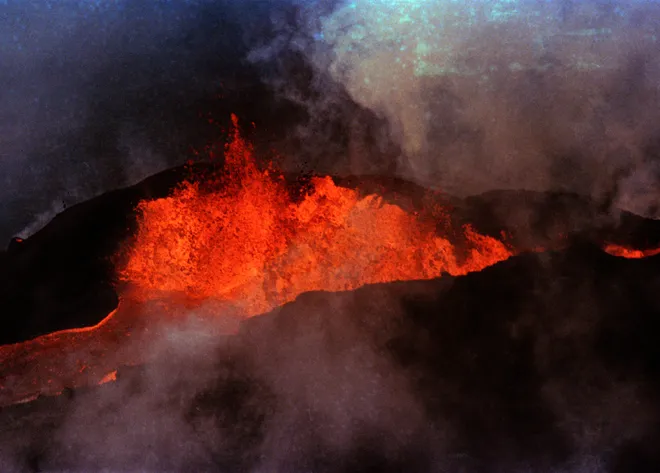For the first time in in 40 years, Mauna Loa, the largest active volcano in the world, is erupting, prompting an ashfall warning for Hawaii’s Big Island and the nearby waters on Monday until 10 a.m. HT (3 p.m. ET).
According to a tweet from the Hawaii Tourism Authority on Monday morning, the eruption in Hawaii Volcanoes National Park poses no threat to downstream villages or planes to the island of Hawaii. Although winds may send fine ash and volcanic gas downwind, the National Weather Service in Honolulu warned that “trace to less than one quarter inch” of ashfall could settle on some areas of the island.
damage. diminished visibility Possible widespread cleanup is required.
According to the weather service, ashfall can harm buildings and cars, taint water supplies, interfere with sewage and electrical systems, and harm or kill flora. Abrasive volcanic ash can also irritate the eyes and lungs.
As stated earlier by the observatory, villages located underneath lava flows are not in danger.
Hawaii, or the Big Island, is the largest island in the Hawaiian chain in terms of area at almost 4,000 square miles, yet the US Census Bureau estimates that there are just over 200,000 residents there, or less than 50 people per square mile. The majority of people live in coastal cities and towns.
The observatory noted that the early phases of a Mauna Loa eruption “can be very dynamic and the location and advance of lava flows can change rapidly,” adding that lava flows “will most likely be confined within the caldera walls if the eruption remains in Moku’weoweo, but lava flows may move rapidly downslope” if the eruptive vents migrate outside its walls.
According to video taken near the Kailua Bay & Pier by Matthew Liano, a resident of Kailua-Kona on the Big Island’s west coast, red hues from the eruption lit up the predawn sky on Monday.
Liano told CNN, “The radiance is unlike anything I’ve seen here living in Kona for most of my life.”
According to the observatory, the eruption started on Sunday around 11:30 p.m. HST (4:30 a.m. ET Monday) in Moku’weoweo, the summit caldera of Mauna Loa.
Kilauea, a volcano that erupted in 2018, is nearby.
The US Geological Survey reports that Mauna Loa, a volcano that makes almost half of Hawaii’s island, has erupted 33 times since 1843, when it first had a “well-documented historical eruption.” Since it last erupted in 1984, this protracted spell of silence is the longest volcano has ever experienced.
Kilauea is a smaller volcano that erupted over several months in 2018 and sprayed lava into the Leilani Estates area, destroying more than 700 homes and uprooting inhabitants. Mauna Loa’s summit crater is located approximately 21 miles west of Kilauea.
According to the agency, there have been more earthquakes and more seismic activity on Mauna Loa recently. The organisation noted this in a late-last-month update.
According to the US Geological Survey, the frequency of earthquakes increased from five to ten per day in June 2022 to about ten to twenty per day in July and August. According to CNN, the number of earthquakes peaked on September 23 and September 29, when more than 100 quakes a day were registered.
The main area of the park, according to the US National Park Service, has remained accessible, however Hawaii Volcanoes National Park in October decided to close the summit of Mauna Loa to all backcountry hikers until further notice due to the increasing activity.
More in National News: https://buzzing.today/national/
Photo Credits: https://www.usatoday.com/
